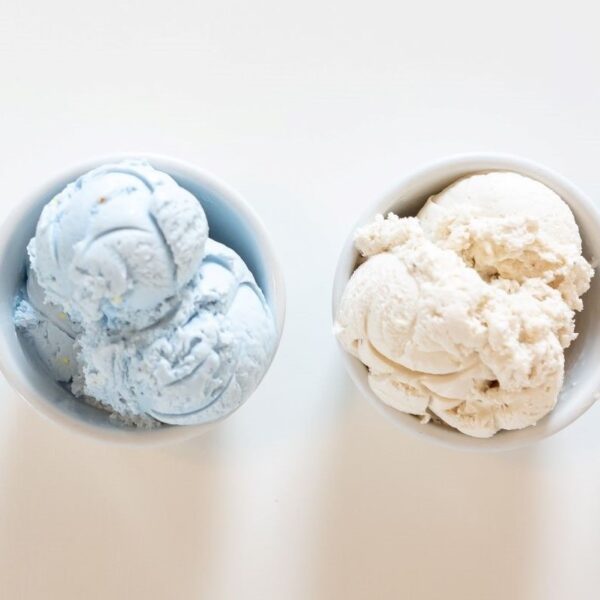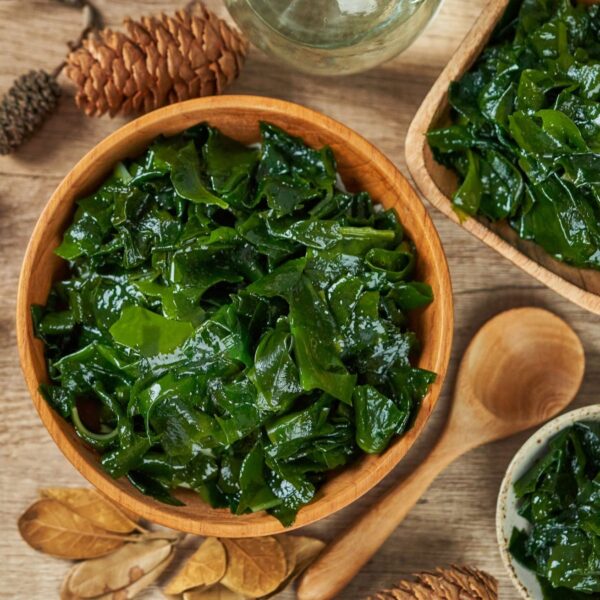Maltodextrin is a polysaccharide widely used in the food industry to thicken, stabilize, and sweeten food products. Its unique properties have made it an essential ingredient in many processed foods and beverages. Maltodextrin is crucial in developing sports drinks, energy bars, and low-fat and low-calorie foods.
This article focuses on its use as an ingredient in food formulations, including applications, regulatory information, and formulation considerations.
What is Maltodextrin?
Maltodextrin is a polysaccharide with molecular formula C6nH(10n+2)O(5n+1), used as a food additive. It is derived from starch and most commonly found in a white hygroscopic spray-dried powder. It is easily digestible, absorbed rapidly as glucose, and tastes moderately sweet or almost flavorless. It can be produced synthetically by partial hydrolysis of any starch using enzymes where the polysaccharide is cut into smaller molecules of variable molecular weight (~300-1700 g/mol).

Use of Maltodextrin in Food Products
Maltodextrin has low bulk density and a comparatively neutral sensory profile. This makes it an inexpensive filler to add bulk to processed foods. Maltodextrin can also increase the shelf life and stability of foods. For example, it improves texture (in beer) and replaces sugar or fat in processed foods. Due to its hygroscopic nature, it binds to water and improves food products’ consistency and mouthfeel.
Applications in Food Products
The following list names some of the functionalities of maltodextrin in food products:
- Carrier
- Thickener
- Viscosity modifier
- Film former
- Bulking agent
- Encapsulant
- Flavor enhancer
- Cryoprotectant
- Binder
- Mild sweetener
- Stabilizer
- Anticaking agent
Product Examples
Maltodextrin is found in various food products, including:
| Type | Examples |
|---|---|
| Infant Formulations | Baby Food, Milk Replacements |
| Brewing | Beer |
| Convenience Food | Breakfast Cereals, Instant Meals, Snacks |
| Savory | Mayonnaise, Sauces, Soups, Seasonings, Salad Dressing |
| Beverages | Powdered Beverages, Sports Drinks |
| Dairy | Pudding, Yogurt drinks, Ice Cream |
| Other | Artificial Sweeteners, Encapsulated/ Spray Dried Liquids |
Properties of Maltodextrin
| Molecular Weight | 504.5 g/mol (n = 3) 2774.7 g/mol (n = 17) |
| Bulk Density | 0.42–0.47 g/mL |
| Storage Conditions | Temperature <30°C and <50% RH |
| Solubility in Water | ~1.2 kg/L |
| Physical Form | Powder |
| pH | 4.0 – 7.0 |
| Claims (*Product Specific) | *Organic, *Non-GMO, *Halal, *Kosher |
| Appearance | White to yellow powder |
| Calorific Value | 4 Cal/ g |
| Glycemic Index | ~95 and more |
Typical Formulations
Soup and Seasoning Mix
Because of its mildly sweet taste, maltodextrin lifts the flavor profile of soup and seasoning mixes. It adds bulk to the powder formulation and provides consistency and mouthfeel to the final product. Unlike starches, it does not mask the taste of other ingredients and is added solely — or in addition to — starches in soup/seasoning mixes to provide sufficient thickening and bulk.
Here is an example of a dill-flavored soup mix formulation table with maltodextrin along with the % weight of ingredients:
| Ingredient | % Composition |
|---|---|
| Skim Milk Powder | 20 |
| Corn Flour | 15 |
| Potato Flour | 11.75 |
| Wheat Flour | 12.5 |
| Maltodextrin | 12.5 |
| Fat | 7 |
| Dill Powder | 5 |
| Salt | 5 |
| Sugar | 6 |
| Onion | 2.5 |
| Pepper | 1.75 |
Infant Formula
Maltodextrin is added to infant formulations because it’s an energy-dense polysaccharide with comparatively lower sweetness, thickens formulations, is easy to digest, and improves the dispersibility of the powder formulation in water and prevents lumping. Maltodextrin replaces lactose as a source of digestible carbohydrates in infant formula because it helps reduce osmotic load and related intestinal distress while having no adverse effects on growth.
Here is an example of a typical infant formula formulation table with maltodextrin along with the % weight of ingredients:
| Ingredient | % Composition |
|---|---|
| Maltodextrin | 25 |
| Fat Concentrate (80% Coconut Oil) | 13 |
| Fat concentrate II (80% palm oil on sweet whey) | 24.65 |
| Whey Protein Concentrate (75%) | 25 |
| Wheat Protein Hydrolysate | 5.02 |
| Dipotassium Phosphate | 1.5 |
| Citric Acid | 1 |
| Sodium Chloride | 1 |
| Calcium Carbonate | 0.75 |
| Calcium Formate | 0.5 |
| Calcium Acetate | 0.5 |
| Magnesium Sulfate | 0.5 |
| Potassium Sorbate | 0.34 |
| L-lysine HCL | 0.3 |
| DL-Methionine | 0.2 |
| Silica | 0.06 |
| L-Tryptophan | 0.05 |
| Sweetener | 0.03 |
| Flavor | 0.03 |
| Vitamin E | 0.02 |
| Iron Sulfate | 0.02 |
| L-Threonine | 0.01 |
| Copper Sulfate | 0.01 |
Sports Drink and Energy Supplement
When added to beverages and energy supplements, maltodextrin provides the same amount of energy (4 Cal/g) as a sports drink made with sugar, while providing comparatively mild sweetness. It has a very high glycemic index and is assimilated quickly. Sports drinks containing maltodextrin can provide a quickly digestible fuel for exercise and help athletes with endurance.
Here is an example of a watermelon-flavored, protein-rich energy drink formulation table with maltodextrin along with the % weight of ingredients:
| Ingredient | % Composition |
|---|---|
| Watermelon Juice (94 % moisture) | 100 (% Juice Basis) |
| Maltodextrin | 5 (% Juice Basis) |
| Sugar | 10 g |
| Caffeine | 75 mg |
| CMC | 0.5 g |
Yogurt Drinks
Maltodextrins can form thermo-reversible gels and can create a fat-like mouthfeel. Therefore, they are used in drinkable liquid formulations like yogurt as potential fat replacers.
Here is an example of an instant yogurt drink formulation table with maltodextrin along with the % weight of ingredients:
| Ingredient | % Composition |
|---|---|
| Sweet Whey | 20.40 |
| Vanilla Flavor | 0.47 |
| Tricalcium Phosphate | 0.33 |
| NFDM | 8.79 |
| Yogurt Powder | 22.43 |
| Xanthan Gum | 0.47 |
| Aspartame | 0.13 |
| Maltodextrin | 29.94 |
| Yogurt Culture | 0.006 |
| Maltol | 0.13 |
| Coffee Whitener | 14.51 |
| Mono & Diglycerides | 1.43 |
| Carrageenan | 0.71 |
Maltodextrin Formulation Considerations
Stability
| Attribute | Stability |
|---|---|
| Heat | Starts to decompose at >163 °C |
| Light | Light stable |
| Oxidative | Stable |
Dosage
The typical dosage of maltodextrin in food products depends on the product type and the desired texture and flavor. Generally, the amount of maltodextrin used ranges from 0.5-10% by weight.
Effect on the Sensory Properties of Food Products
Sweetness (Dextrose Equivalence)
DE indicates dextrose equivalence, the inverse of the degree of polymerization (DP). The higher the DE, the higher the monosaccharides and short-chain polymers that provide sweetness. Maltodextrins are generally available with DE values of 5 to 35.
Flavor Enhancement & Taste Masking
Maltodextrin can enhance food’s flavor by adding sweetness and a creamy texture. It can be also be used as a substitute for sugar, helping to reduce calories and fat without sacrificing taste while masking off-notes.
Enzymatic & Non-Enzymatic Browning
Maltodextrin is prone to enzymatic and non-enzymatic browning in food products. It adds to the sensory profile when caramelized.
Effect on the Functional Properties of Food Products
Effect on Rheological Properties
Generally, maltodextrin gels have high viscosity, low elasticity, and high adhesiveness. They can also provide good suspension, emulsification, and viscosity control. Maltodextrin gels are also often used as thickeners and stabilizers in food products. They can be used from 1-20% in food products to achieve the desired consistency and thickness. Maltodextrin shows a significant reduction in viscosity at pasting. The effect produced by maltodextrins is closely connected to the degree of polymerization.
Effect of Degree of Polymerization
DP suggests the quantitative fraction of saccharide in polymerized form. DP affects the functional properties of maltodextrin. As DP increases, the browning, hygroscopicity, plasticity, sweetness, and solubility of maltodextrin decrease. In contrast, its molecular weight, gelling ability, water-holding capacity, cohesiveness, and viscosity increase with DP.
Freezing Point Depression
Maltodextrins act as cryoprotectants in frozen products and desserts. Because of their higher molecular weight, they do not lower the freezing point as much as sugars on an equivalent weight basis. Maltodextrins also inhibit the ice-crystal formation and prevent the resultant graininess and loss of quality. They also help improve the melt characteristics of the product.
Crystallization
Maltodextrins prevent sugar crystallization and improve chewiness in soft confections. It acts as a humectant and increases flexibility. It can also be added to high fructose corn syrups in minimal concentrations (~4%) to prevent crystallization.
Phase Stability
Maltodextrin helps to prevent the separation of ingredients and can help to maintain the texture and consistency of products. It can also be used to thicken and bind ingredients together, reducing the mobility of molecules and preventing phase separation.
Effect on Nutritional Properties of Food
Glycemic Index and Energy Value
Maltodextrin is a quick energy source with 4 calories per gram. There are no vitamins or minerals present in maltodextrin. Although it is used as a bulking agent in food owing to its low cost, better functional attributes, and near-neutral sensory properties; it has no lesser calories compared to table sugar (sucrose). The glycemic index (GI) of maltodextrin is higher than in table sugar. It can cause a spike in blood sugar shortly after eating. A sudden increase in blood glucose can be detrimental for people with insulin resistance or diabetes.
Digestibility
Maltodextrin is easily digestible and absorbed fully through the intestine. It is not reported to cause any gastrointestinal discomfort — making it a popular additive in infant formulations.
Fat Replacement & Energy Reduction
Maltodextrins are believed to be potential fat replacers and can improve the physicochemical properties of food products, such as viscosity, lubricity, and softness. They form a gel with water which has a similar size (1–3 µm) as fat globules, providing a fat-like texture to foods. Maltodextrin gel has 3x the quantity of water and therefore has a calorific value of 1 Cal/g, significantly less than 9 Cal/g from fat.
Digestion Resistant Maltodextrin
Digestion-resistant maltodextrin, in contrast to maltodextrin, is an indigestible fiber. It may be partially digested in the colon and can act as a prebiotic; however, it has a meager calorific value. It also has low hygroscopicity and high dispersibility in water. And because it has a bulk density similar to maltodextrin, with comparatively lesser calories and an almost neutral taste, it’s used as a low-calorie bulking agent in food products.
Maltodextrin Safety & Regulatory Considerations
Maltodextrin is a food additive classified as Generally Recognized as Safe (GRAS) by the US Food and Drug Administration (FDA). Maltodextrin can be enzymatically derived from any starch. In the US, this starch is usually corn (maize); in Europe, it is common to use wheat.
In the European Union, wheat-derived maltodextrin is exempt from wheat allergen labeling, as set out in Annex II of EC Regulation No 1169/2011.[3] In the United States, however, it is not exempt from allergen declaration per the Food Allergen Labeling and Consumer Protection Act. Given Food and Drug Administration policy, its effect on a voluntary gluten-free claim must be evaluated on a case-by-case basis.
Fun Facts About Maltodextrin
- Maltodextrin is used as a horticultural insecticide in the field and greenhouses. It has no biochemical action. Its efficacy is based upon spraying a dilute solution upon the pest insects, after which the solution dries, blocks the insects’ spiracles, and causes death by asphyxiation.
- Maltodextrin is also used in the brewing industry as a source of fermentable sugars.
- Maltodextrin is a popular ingredient in molecular gastronomy, where it is used to create edible foams and gels.
- Maltodextrin is often used to produce freeze-dried and powdered foods, as it helps prevent clumping and extend the shelf life of these products.
Additional Sources & Resources
- ACS – Maltodextrin
- Nature – A milk formula containing maltodextrin, vs. lactose, as main carbohydrate source, improves cognitive performance of piglets in a spatial task
- Wiley – Use of starch-based fat replacers in foods as a strategy to reduce dietary intake of fat and risk of metabolic diseases
- Food Crumbles – The Science of Ice Cream – Freezing Point Depression
- Google Patents – Method of preventing high fructose syrup from crystallizing
- International Journal of Food Science – Effect of Maltodextrins on the Rheological Properties of Potato Starch Pastes and Gels
- AIP – Sport drink containing maltodextrin to improve physical performance of Soccer athletes








